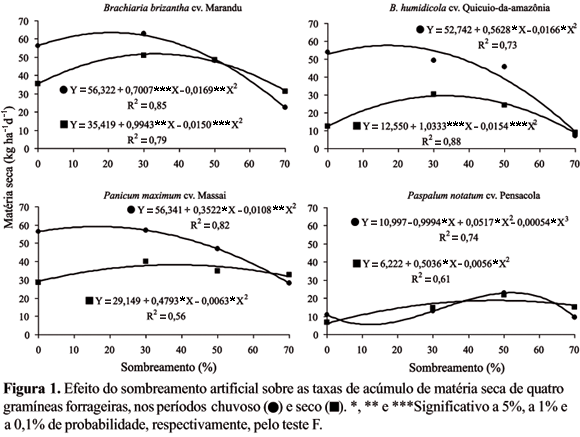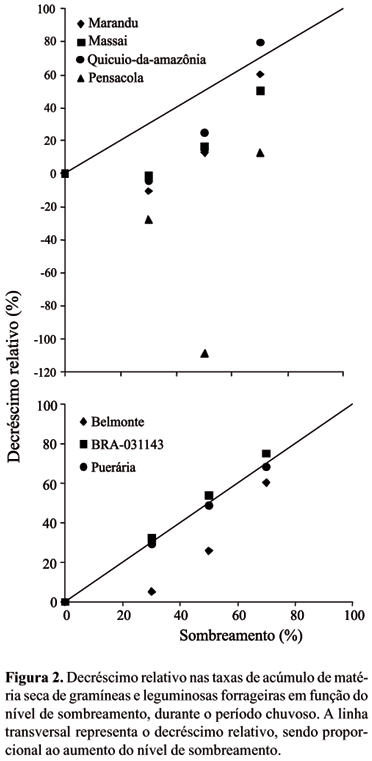The objective of this work was to evaluate the effect of levels of artificial shade (0%, 30%, 50% and 70%) on dry matter accumulation rates of four tropical forage grasses (Brachiaria brizantha cv. Marandu, B. humidicola cv. Quicuio-da-amazônia, Panicum maximum cv. Massai and Paspalum notatum cv. Pensacola) and three forage legumes (Arachis pintoi cv. Belmonte, A. pintoi BRA-031143 and Pueraria phaseoloides) in Rio Branco, Acre, Brazil. To measure dry matter accumulation rates, nine cuts were performed between November 1999 and April 2001. The grasses Marandu and Massai had the best performance, with good shade tolerance and productivity, and were good options for silvopastoral systems in areas with well-drained soils. The quicuio-da-amazônia grass showed lower shade tolerance, and was recommended only for low tree density silvopastoral systems in areas with good rainfall distribution or with poorly drained soils. The Pensacola grass showed high shade tolerance but it is not recommended for silvopastoral systems in the Western Amazon region because of its low yield capacity. Arachis pintoi cv. Belmonte showed higher yield capacity and shade tolerance than the other legumes.
Western Amazon; water stress; light; crop performance; silvopastoral systems




